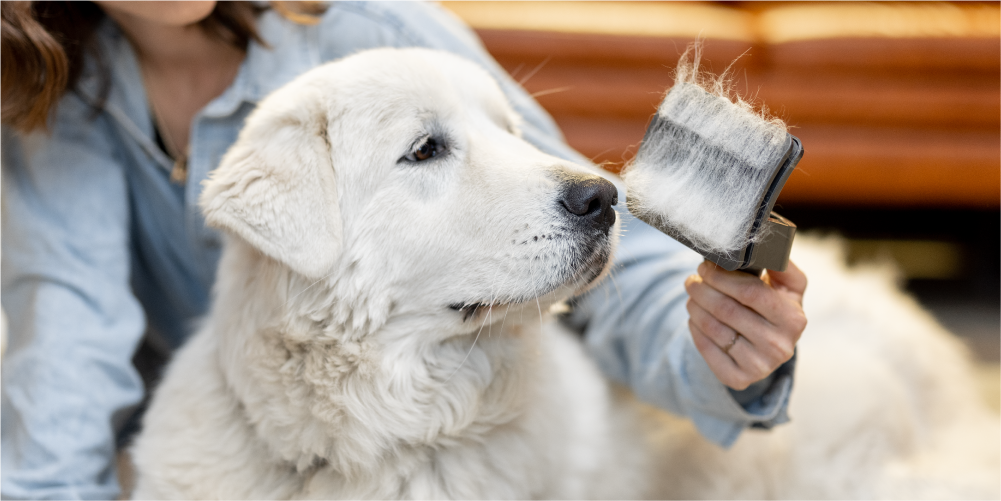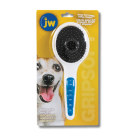
Shedding can be frustrating for all dog owners, no matter how much we love our dogs. All dogs shed to some degree, except for entirely hairless dogs. Don't worry, there are many ways to combat the dog hair floating all over the place! Learn more about why dogs shed hair and how to get the situation under control.
Let's start with why dogs shed hair. Commonly, there are three types of shedding; year-round, seasonal, and health-related shedding.
Year-Round Shedding
All animals with hair regularly shed, therefore causing year-round shedding. Most shedding is the loss of the undercoat, with some regular loss of fur. Normal shedding will occur year-round and will be visible on your clothes, sofa, and around the house. Dogs will shed hair differently depending on their breed type. Dog breeds such as Poodles and Yorkshire Terriers shed very little because their hair has a long life cycle. Dogs like Labradors and Huskies have a shorter hair life span and more abundant undercoats, resulting in more significant shedding year-round.
Seasonal Shedding
Seasonal shedding occurs within some breeds of dogs, usually around springtime, but may also happen in the fall. Seasonal shedding occurs evenly across the whole body and will happen every year on a cycle. This process is referred to as "blowing coat." For example, when the weather warms, dogs shed their old winter undercoats to make way for a lighter summer coat. This type of shedding is typical among cold-weather breeds like Huskies.
Health
Your dog's health may also affect the shedding rate, so it is vital to take note of unexplained excessive shedding.
- Health problems that may affect shedding include:
- Skin problems
- Endocrine diseases
- Nutritional or vitamin deficiencies
- Metabolic disorders
- Any noticeable differences in your pet's shedding rate are an excellent sign to contact your local veterinarian.
How to Control Shedding
Excess shedding can be challenging to manage as pet hair tends to cling to furniture and upholstery around the house. Regular cleaning and vacuuming are essential for getting rid of loose hairs around the house. Keeping the house clean is beneficial for you and your pet, especially if you have allergies.
Get your dog used to grooming, as this is a great way to manage dog hair. Using a specialized dog brush will help to remove dog hair.
Look after your dog's skin and hair by regularly bathing them. Please note that you should only wash your dog when necessary. Using dog shampoo while cleaning your dog will help remove dead and loose hair.
